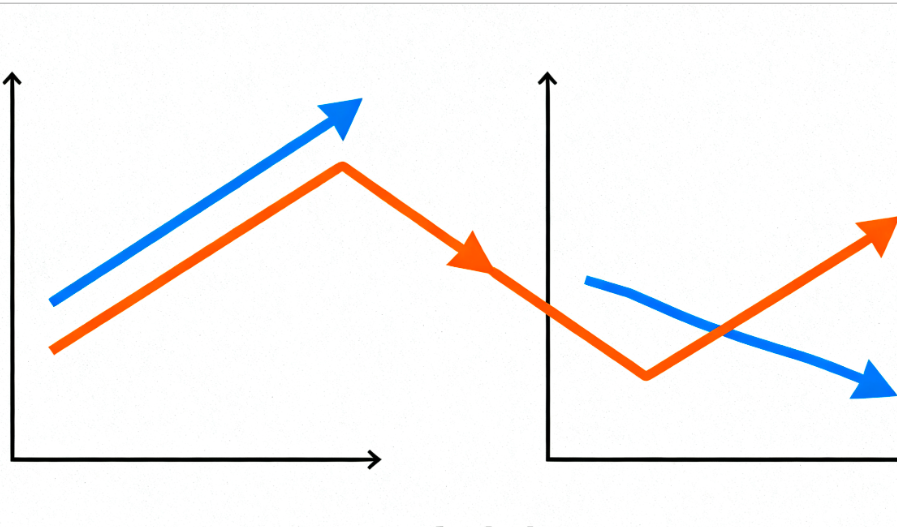
The Digital Asset Treasury (DAT) model was once seen as an innovative path for crypto investment. Companies hold crypto assets as reserves, driving up stock prices and forming a "buy crypto - raise funds - buy more crypto" flywheel.
But now market views seem to be shifting: On one hand, DAT companies have raised over $20 billion cumulatively this year, and some institutional investors believe the peak has passed. On the other hand, short-selling voices are rising, and investors are beginning to question whether there will be a collective rush for the exits. Is the treasury model a long-term moat or a short-term speculative tool?
This article discusses topics of high interest to investors and summarizes interviews with some institutions regarding current DAT trends.
Are DAT Stocks Worth Investing In? Why Not Just Buy Crypto or ETFs?
When evaluating DAT stocks, retail investors often struggle with whether they are better than directly holding cryptocurrencies or gaining indirect exposure through ETFs.
DAT company stocks provide a leverage effect. Taking MicroStrategy as an example, according to data from Portfolio Visualizer, with a $10,000 initial investment between August 2020 and August 2025, Bitcoin rose to $102,229, while MSTR soared to $324,290. MSTR had higher volatility (114% vs. 65.6%) and a higher annualized return (100.5% vs. 59.2%), resulting in a higher Sharpe ratio than Bitcoin. This, of course, benefits from the company amplifying its Bitcoin holdings through debt financing.
Justin Sun once publicly stated that traditional ETFs give you exposure to crypto prices, but that's it. DATs go a step further; they put assets to work. These DATs are not idle but are staked, lent, and deployed in DeFi and yield protocols, earning actual returns while maintaining full on-chain transparency. This model transforms digital assets from speculative holdings into efficient financial engines, outperforming ETFs.
However, Forbes analyst Alexander Blume stated that DAT companies utilize very complex financial products, leveraging retail speculation, debt instruments, marketing, and legal and regulatory arbitrage factors, hoping to outperform Bitcoin. Some of these strategies face black swan-like risks; they seem to perform well until they suddenly fail.
CoinShares stated that DAT stocks are riskier than ETFs because they are not only affected by crypto prices but also involve company operations and debt burdens. This emerging model carries some risks that might be masked by the current bull market. Companies chasing altcoins or meme coins but lacking sustainable core businesses expose investors to higher volatility and uncertainty. If coin prices stagnate or fall, these companies can quickly become over-leveraged and susceptible to sharp corrections.
In contrast, buying crypto directly provides full ownership but also requires dealing with custody and tax complexities; ETFs lower the barrier to crypto, require paying an annual fee (generally around 0.25%), are convenient to trade but lack leverage. The Halborn advisory team pointed out that DATs suit investors seeking high returns, but ETFs are better for risk-averse individuals because the latter offer better diversification, avoiding single-company bankruptcy risk.
According to rough statistics, in September 2025, DAT stocks rose an average of 150% within 24 hours after announcing reserves, attracting short-term capital. However, risks coexist. Since the second half of 2025, Metaplanet's stock price has fallen by over 70%, its market capitalization has dropped below the value of its Bitcoin reserves, and its mNAV ratio has fallen to 0.99, indicating clearly insufficient market confidence.
How Long Can the Treasury Trend Last? What is the Intrinsic Value of Treasury Coins?
Since initiated by MicroStrategy, the treasury trend has attracted many companies to follow suit. In 2025, over 160 listed companies globally have included cryptocurrencies like Bitcoin and Ethereum on their corporate balance sheets, with total holdings exceeding $240 billion.
Among them, as of October 6, the total Bitcoin held by the counted global listed companies (excluding mining companies) is 864,210 BTC, with a current market value of approximately $107.43 billion, accounting for 4.34% of Bitcoin's circulating market capitalization.
The influx of traditional capital has pushed up valuations and also raised concerns about bubbles. Peter Chung, Head of Research at Presto, stated that while the risk of treasury companies collapsing does exist, it is more subtle compared to the collapse scenarios seen in the last crypto boom and bust cycle.
As premiums narrow and mainstream assets are already covered, the focus of capital is shifting towards execution, scaling, and M&A integration, and it's creating a crowding-out effect on traditional crypto startup financing. The market is questioning the sustainability of the DAT trend. Industry experts predict that large companies, including well-known tech giants, will begin establishing Bitcoin positions by the end of 2025. For SMEs and large enterprises, the question has shifted from "if" to "when".
Patrick PAN, Head of Web3 Business at China Renaissance, told ChainCatcher that any emerging market experiences a cycle of "professional institutions leading - small and medium players flooding in - survival of the fittest and re-concentration" in its early stages. Currently, small and medium-sized DATs are mostly still in the "experimental stage," which is positive for market education. But ultimately, those that can persist long-term are the leading treasuries that are compliant, transparent, have clear capital structures, and possess stable revenue models.
The trend this year is that DAT coin selection has expanded from Bitcoin to ETH, Solana, BNB, and even altcoins like XRP, AVAX, ENA, IP, and Dogecoin, showing a diversification trend. Patrick PAN said this is actually a process of natural market selection. In the short term, some small-cap coins are included to enhance returns or test mechanisms, but in the long run, quality assets will still dominate.
However, an Elementus analyst mentioned that companies investing in altcoin reserves face additional risks; it's a less diversified bet. During market crashes, altcoins typically have a higher correlation with Bitcoin, but in some cases, they might not equally share Bitcoin's status as a "quality asset migration."
Is the Treasury a Moat or a Harvesting Tool? How to View Speculative Risks?
Currently, DATs have substantial unrealized gains. For instance, MicroStrategy's Bitcoin holdings still have unrealized gains of over $24.5 billion, with a return rate of 51.91% to date. Is there a possibility that these treasury companies might realize profits early?
Short-selling firm Kerrisdale Capital posted on platform X announcing it had shorted the stock of Bitmine, an Ethereum treasury reserve company, arguing that the so-called DAT model has become mediocre and unoriginal. The firm stated that scarcity and meme-like enthusiasm once kept premiums high despite continuous dilution, but these conditions have now disappeared.
Reportedly, since the 10/11 crash event, BitMine has continued buying Ethereum, accumulating nearly 380,000 ETH, worth approximately $1.5 billion, with total holdings exceeding 3 million ETH.
Currently, treasury companies still play the role of major buyers in the crypto market. However, during phases where net assets shrink with price declines, their ability to add funds is limited, and the strength of marginal buying weakens.
Institutions predict new projects will still be launched by the beginning of next year, but funding amounts will be smaller. As for massive DAT financings of $500 million to over $1 billion, only a few participants with high market capitalization and sufficient volatility to support convertible bonds can truly raise such funds.
Sam Tabar, CEO of Bit Digital, stated during the Singapore Token 2049 summit that Digital Asset Treasury (DAT) companies should consider using unsecured debt financing instead of secured debt to better cope with potential bear markets. The most efficient way to increase crypto assets per share is debt financing. While increasing crypto asset holdings without changing equity is good, the choice of financing type is crucial – wrong leverage can destroy a company.
Data from Presto shows that only one-third of DAT company financing is through debt, and 87% of that debt is unsecured. Chung believes that even in the worst-case scenario, the proportion of potential collateral is far lower than the leverage levels of the 2021 cycle. Therefore, as long as this principle is adhered to, margin calls are unlikely to pose systemic liquidation risks. He pointed out that this doesn't mean crypto asset management companies will never sell their holdings. Under unforeseen circumstances, if cash is urgently needed and no other funding sources are available, they might liquidate these assets.
How do treasury companies buffer risks during crypto market downturns? Vicky Wang, President of the digital asset wealth management platform Amber Premium (Nasdaq: AMBR), told ChainCatcher in an interview that the key in a downturn cycle is not "betting on direction" but systematic "defense-adjustment-protection": from managing volatility and liquidity of assets, to stabilizing the mNAV anchor through disciplined rebalancing and valuation deviation management, to custody layering and transparent disclosure, minimizing operational risk and information asymmetry.
Simultaneously, the DAT strategy spectrum is rapidly diversifying: single-coin exposure relies more on long-term narratives and stress-bearing capacity, multi-coin portfolios test correlation and rebalancing mechanisms, and strategies for more complex structures require a professional skill set combining derivatives, liquidity, accounting, and compliance.
Regarding short-term speculative risks, Vicky Wang stated this is not a sustainable path. The success of a DAT relies on the long-term investment value of the underlying assets. The strong cyclicality of the crypto market means most DATs will experience ups and downs together. Navigating cycles depends on the dual-track governance of "cognition and mechanism."
Conclusion
Overall, DAT stocks themselves suit investors seeking high returns. The trend of treasury financing to buy crypto depends on each company's financing capability (cost and method). If they focus on long-term governance, DAT is a moat; otherwise, it becomes a speculative trap. Excellent treasury companies do not simply chase crypto price beta but maintain a long-term positive mNAV premium through operation and governance. Crypto investors should focus more on companies with solid fundamentals and carefully evaluate drawdown and exit strategies.
















